Behavior – Choosing the right breed of dog
[ad name=”Bullmastiff ad”]
HOW TO CHOOSE THE RIGHT PUPPY THAT SUITS BOTH YOU
AND YOUR LIFESTYLE!
PART ONE – CHOOSING YOUR PUPPY
Choosing a puppy or adult dog is a decision that should not be taken lightly. This animal is going to be part of the family for the next 10 to 15 years (depending on the size of the dog). It is important that those years are enjoyable and not stressful.
I always ask people to consider the following: when buying a new car a person will go around to the dealers and look at all the different types, models etc. Then they will check the specs – size, speed, extras, and maintenance. I have yet to meet anyone who has just rushed out and bought the first car that they have seen. Buying a car is a short term commitment (of about 3 to 5 years), certainly not the long term commitment that comes with buying a puppy. Yet, 85% of people will see a cute puppy in a pet shop and buy it on a whim; or see an advertisement in the paper and get a puppy without checking out the background of the parents.
So, what steps should be taken before getting a puppy?
- The whole family needs to get together and make a decision about the puppy- such as do we really need a puppy now, and what is the reason for getting this puppy?
- Sit with a dog breed book and look at all the breeds (even cross breeds have two breeds in them and you need to know what each breed characteristic will bring to the temperament of the puppy).
- Look at the size of the property and think which breed would suit that size.
- Look at the lifestyle of the family and decide which breed will fit that lifestyle. Don’t get a very active dog like a Border Collie if no one is home. Every breed of dog needs some form of interaction with their human pack. It is unfair to buy a dog and put it outside and it never gets any attention. This will cause behavioral problems such as barking, jumping at people, jumping over walls, escaping from the property, digging, chewing.
- Why are you buying the puppy – as a guard dog or a family pet? Even a guard dog needs to interact with the family.
- Can the family actually AFFORD a new puppy? What are the long term costs of this puppy? The puppy needs vaccinations until 4 months of age and then yearly from then on. The puppy will need to be spayed or neutered at 6 months of age (this is not negotiable). The costs of feeding the dog for 10 to 15 years plus the unforeseen things that need a trip to the vet. ALL ANIMALS COST MONEY. Will the family get rid of the dog when money is tight?
- All puppies / dogs need some form of training. Is the family prepared to put the time, effort and cost into this commitment?
- Are there children in the family? Then choose a breed that is good with children? HOWEVER, do not fall into the trap of “I’m getting a puppy for the children”. Children under the age of 7 cannot look after a dog; and 2, 3, and 4 year olds will scream and run away when puppies nip and chase them.
- A DOG IS FOR LIFE – not just for Christmas or for as long as it fits into the lifestyle of a family!
PART TWO – DOG BREEDS
DOG BREEDS:
There are seven categories of dog breeds:
GUNDOGS; HERDING; HOUNDS; TERRIERS; TOYS; UTILITY; WORKING.
The most popular breeds in these categories are:
GUNDOGS: Labradors; Golden Retrievers; Spaniels; Setters; Weimaraners; Pointers
Gundogs: were bred to retrieve. They like to work and will pick up things and carry them around the house. They are active dogs and get up to mischief if bored.
HERDING: Border Collies, Collies, Shelties, Corgis; White Shepherds, Bearded Collies; Bouviers; Old English Sheepdogs; Australian Shepherds
Herding: were bred to herd sheep or cattle. They love working and if bored will find something to keep them occupied. They will herd anything that moves – cats, children, other dogs etc. They HAVE to be trained and have their brain stimulated.
HOUNDS: Afghans; Ridgebacks; Whippets; Dachshunds; Bassets; Irish Wolfhounds; Beagles
Hounds: were bred to run and chase. These dogs need exercise and are pack animals – they cannot be only dogs. They use their noses so will spend a lot of time smelling the ground. When on a scent trail they have NO ears. They can be very stubborn.
TERRIERS: Bull Terriers; Staffies; Scotties; Westies; Airedales; Fox Terriers; Wire Haired Fox Terriers; Cairn; Pit Bulls
Terriers: were bred to chase and capture prey. They will chase anything that moves, especially cats, rabbits etc if they are not used to them. Sadly, they will kill if they corner their “prey”. If they are not socialized from an early age they are not good with other dogs. Some breeders like the aggression and breed this. A bad terrier is a danger.
TOYS: Toy Poms; Pekinese; Min Pins; Pugs; Maltese (in South Africa we have the Maltese Poodle which is different to the real Maltese) Papillion; Yorkies; Cavalier Spaniels
Toys: were bred to be just that, a small dog for humans. These breeds are loving and enjoy being close to their humans. Some like to be carried and cuddled. However, it must be remembered that they are still dogs, and should be treated just like bigger breeds – with some training, and not thought of and treated as a human baby.
UTILITY: Shih Tzu’s; Lhasa Apsos’; Poodles; Shar Peis; Bulldogs
Utility: were bred for utility uses. Poodles are water retrieving dogs. They are extremely clever and like to be worked (all sizes). Bulldogs and Shar Peis were bred to fight, but lately are more laid back and make good family dogs. But if not socialized can be aggressive to other dogs.
WORKING: German Shepherds; Dobermans; Rottweiler’s; Boxers; Siberian Huskies; Alaskan Malamutes’ Bullmastiffs;
Working: were bred to do a job, mostly to guard. GSD’s; Rottweilers; Dobermans; Bullmastiffs are used almost exclusively to guard property. They are lovely family dogs and should be included as much as possible within the family pack. They don’t like to be left outside with no interaction. Boxers are hyperactive but lovely family dogs. Siberian Huskies and Alaskan Malamutes were bred to pull sleds. They need space and lots of exercise.
This list is not the complete list of dog breeds that are available, but they represent the breeds that are usually chosen by people when buying a puppy. The lesser know breeds are listed in dog breed books. One breed that I haven’t mentioned is the Boerboel. This popular South African breed is being bred prolifically as they have a reputation as being a wonderful guard dogs. Unfortunately, their popularity has led to indiscriminate breeding with no thought given to temperament and health. Sadly, at the moment the highest number of dogs being put to sleep for aggression is the Boerboel.
So it is important to remember:
When choosing a breed, find out as much as possible about that breed. Read books, use the internet and talk to breeders before making a choice. You need to know the good as well as the bad points of the breed. It is also a good idea to go to a training school and watch the dogs. Speak to trainers and find out what they think of the chosen breed. A vet will also be able to say what they think of each breed.
It is such a pity that so many puppies are bought on an emotional whim. By doing the correct homework and making an informed choice, owing a puppy/dog will be a wonderful experience for the whole family.
Please remember that this article represents my own thoughts and feelings and is not connected to any other person. To find out any further information please consult Dog Breed books, the internet and breeders.
Kathy Clayton
Accredited Animal Behaviour Consultant (ABC of SA)
Professional Dog Trainer
www.yourownvet.com


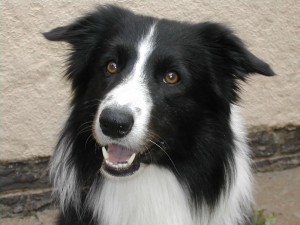
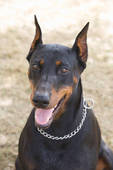
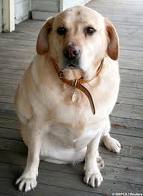



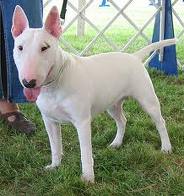
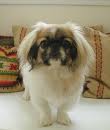


Leave a Reply
You must be logged in to post a comment.